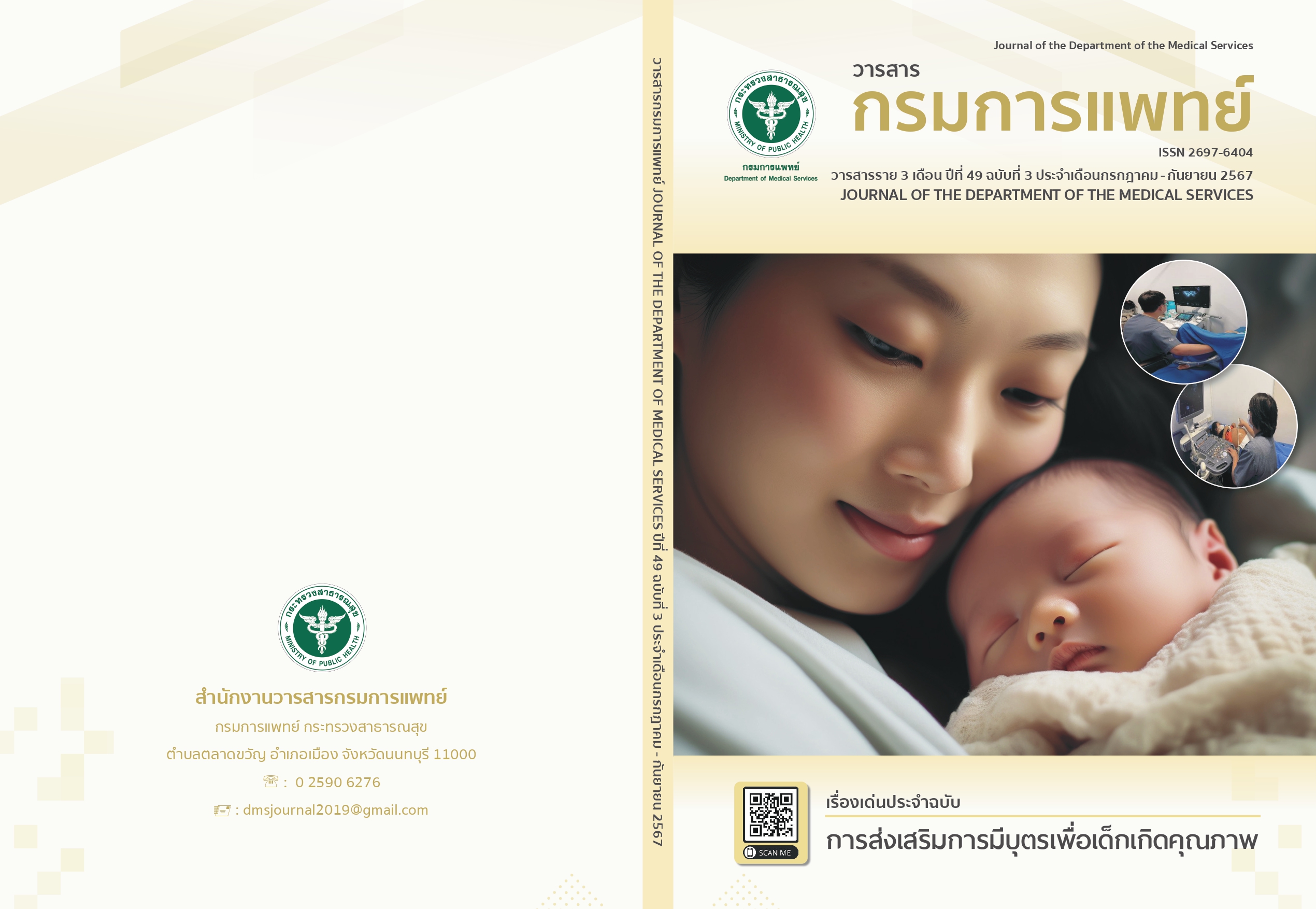Type of Bladder Management in Neurogenic Lower Urinary Tract Dysfunction (NLUTD) Associated with Upper Urinary Tract Deterioration (UUTD): A Retrospective Study
Keywords:
Neurogenic lower urinary tract dysfunction (NLUTD), Upper urinary tract deterioration (UUTD)Abstract
Background: Vary bladder management options for neurogenic lower urinary tract dysfunction (NLUTD) including intermittent catheterization (IC), spontaneous voiding, and indwelling catheterization were used in spinal cord injury patients (SCI). A urological checkup is performed regularly to assess upper urinary tract deterioration (UUTD) and to give proper management. The goal is to reduce renal failure in the long term. Objective: To report the upper urinary tract deterioration in patients were performed different bladder management methods, including the involvement factors. Methods: This retrospective study included 3 bladder management methods and upper urinary tract follow-up from May 2012 to September 2020, 176 people totaled 812 times. General data were analyzed with descriptive statistics. We analyzed the association of factors associated with management that were likely to influence changes in the upper urinary tract. Result: The 176 patients, mostly male (131 persons, 76.6%) were included in this study. Total number of examinations was 812 times, mostly managed by indwelling catheterization. The primary outcome showed incidence of upper urinary tract deterioration found in intermittent catheterization groups (36.23%) more than those who indwelling catheter group (27.97%) or self-voiding patients (12.12%). In most follow-up studies, the results showed a stable trend. However, when adjusting for differences in variables based on many factors, it was found that patients managed with the intermittent catheterization program were more likely to develop upper urinary tract deterioration less than spontaneous void and indwelling catheterization patients. (19.3%, 23.7% and 26.5% respectively) Conclusion: Intermittent catheterization method is less likely to cause upper urinary tract deterioration than indwelling urinary catheterization. Therefore, if patients are unable to return to void by themself, the patients should be trained to do a self IC program to reduce the risk of long-term upper urinary tract complications.
References
Suksathien R, Ingkasuthi K, Bumrungna S. Factors associated with Hydronephrosis and Vesicoureteral Reflux in Spinal Cord Injured Patients: ASEAN J Rehabil Med 2019;29(2):51–7.
Myers JB, Lenherr SM, Stoffel JT, Elliott SP, Presson AP, Zhang C, et al. Patient Reported Bladder Related Symptoms and Quality of Life after Spinal Cord Injury with Different Bladder Management Strategies. J Urol 2019;202(3):574–84.
Cameron AP, Wallner LP, Forchheimer MB, Clemens JQ, Dunn RL, Rodriguez G, et al. Medical and psychosocial complications associated with method of bladder management after traumatic spinal cord injury. Arch Phys Med Rehabil 2011;92(3):449–56.
Crescenze IM, Myers JB, Lenherr SM, Elliott SP, Welk B, Mph DO, et al. Predictors of low urinary quality of life in spinal cord injury patients on clean intermittent catheterization. Neurourol Urodyn 2019;38(5):1332–8.
Jackson AB, DeVivo M. Urological long-term follow-up in women with spinal cord injuries. Arch Phys Med Rehabil 1992;73(11):1029–35.
Zlatev DV, Shem K, Elliott CS. Predictors of long-term bladder management in spinal cord injury patients-Upper extremity function may matter most. Neurourol Urodyn 2018;37(3):1106–12.
Çetinel B, Önal B, Can G, Talat Z, Erhan B, Gündüz B. Risk factors predicting upper urinary tract deterioration in patients with spinal cord injury: A retrospective study: Risk Factors for Upper Urinary Tract Deterioration. Neurourol Urodyn 2017;36(3):653–8.
Neurogenic Bladder Turkish Research Group, Yıldız N, Akkoç Y, Erhan B, Gündüz B, Yılmaz B, et al. Neurogenic bladder in patients with traumatic spinal cord injury: treatment and follow-up. Spinal Cord 2014;52(6):462–7.
Afsar SI, Yemisci OU, Cosar SNS, Cetin N. Compliance with clean intermittent catheterization in spinal cord injury patients: a long-term follow-up study. Spinal Cord 2019;51(8):645–9.
Di Benedetto P. Clean intermittent self-catheterization in neuro-urology. Eur J Phys Rehabil Med 2011;47(4):651–9.
Wyndaele J, Madersbacher H, Kovindha A. Conservative treatment of the neuropathic bladder in spinal cord injured patients. Spinal Cord 2001;39(6):294–300.
Jamil F. Towards a catheter free status in neurogenic bladder dysfunction: a review of bladder management options in spinal cord injury (SCI). Spinal Cord 2001;39(7):355–61.
Kavanagh A, Baverstock R, Campeau L, Carlson K, Cox A, Hickling D, et al. Canadian Urological Association guideline: Diagnosis, management, and surveillance of neurogenic lower urinary tract dysfunction - Full text. Can Urol Assoc J J Assoc Urol Can 2019;13(6):E157–76.
Roth JD, Pariser JJ, Stoffel JT, Lenherr SM, Myers JB, Welk B, et al. Patient subjective assessment of urinary tract infection frequency and severity is associated with bladder management method in spinal cord injury. Spinal Cord 2019;57(8):700–7.
Wu CQ, Franco I. Management of vesicoureteral reflux in neurogenic bladder. Investig Clin Urol 2017;58(Suppl 1):S54–8.
Risi O, Palma LD, Andretta E. The role of clean intermittent catheterization in rehabilitation setting: a survey of healthcare operators’ perception in Italy. Eur J Phys Rehabil Med 2020;56:6.
Schöps T-F, Schneider MP, Steffen F, Ineichen BV, Mehnert U, Kessler TM. Neurogenic lower urinary tract dysfunction (NLUTD) in patients with spinal cord injury: long-term urodynamic findings: NLUTD in patients with SCI. BJU Int 2015;115:33–8.
Sirasaporn P, Saengsuwan J. Incidence and predictive factors for developing vesicoureteric reflux in individuals with suprasarcral spinal cord injury: a historical cohort study. Spinal Cord 2021;59(7):753–60.
Johnson EK, Malhotra NR, Shannon R, Jacobson DL, Green J, Rigsby CK, et al. Urinary tract infection after voiding cystourethrogram. J Pediatr Urol 2017;13(4):384.e1-384.
Downloads
Published
How to Cite
Issue
Section
License
Copyright (c) 2024 Department of Medical Services, Ministry of Public Health

This work is licensed under a Creative Commons Attribution-NonCommercial-NoDerivatives 4.0 International License.
บทความที่ได้รับการตีพิมพ์เป็นลิขสิทธิ์ของกรมการแพทย์ กระทรวงสาธารณสุข
ข้อความและข้อคิดเห็นต่างๆ เป็นของผู้เขียนบทความ ไม่ใช่ความเห็นของกองบรรณาธิการหรือของวารสารกรมการแพทย์



